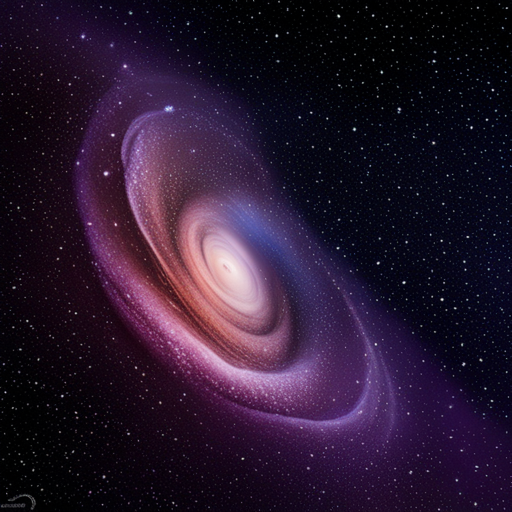What caused the formation of galaxies?
Article Source
Dark Matter and Structure Formation: Read Full Article

Why You Should Care
Understanding how dark matter contributed to the formation of galaxies helps us learn more about the universe we live in. It's like discovering the secret ingredients that made our cosmic home.
Answering the Question: What caused the formation of galaxies?
Dark matter played a huge role in galaxy formation by acting as the "glue" that helped pull galaxies together. Without dark matter, the universe would look very different, with fewer galaxies and stars. Dark matter makes up about 85% of the total mass in the universe, which means it had a big impact on shaping galaxies. This means for every kilogram of regular matter, there are about 5.7 kilograms of dark matter.
How Was the Study Done?
Scientists used computer simulations and observations from telescopes to study the role of dark matter in galaxy formation. They looked at how dark matter interacts with visible matter (like stars and gas) and how it influenced the structure of the universe over billions of years. The simulations ran on supercomputers and used data from over 10,000 galaxies observed by the Hubble Space Telescope.
What Was Discovered?
- Dark Matter's Mass: Dark matter makes up about 85% of the universe's total mass, meaning it had a major role in pulling galaxies together.
- Galaxy Formation: Dark matter helped form galaxies by creating deep gravitational wells, pulling in gas and dust that eventually formed stars and galaxies. It is estimated that without dark matter, only about 10% of galaxies would exist.
- Structure of the Universe: Dark matter helped shape the large-scale structure of the universe, creating a web-like pattern where galaxies are found in clusters and filaments. This cosmic web stretches over billions of light-years.
- Gravitational Effects: The study found that the gravitational pull of dark matter was essential for the formation of galaxies, affecting the motion and distribution of stars and gas. Dark matter’s gravitational influence extends over 10 times the size of visible galaxies.
- Observational Evidence: Scientists used data from the Hubble Space Telescope and other observatories to confirm that areas with more dark matter had more galaxies and stars. In regions dense with dark matter, there are up to 1,000 galaxies within a single cluster.
- Cosmic Web: The simulations showed that dark matter formed a cosmic web, with galaxies forming at the intersections of these dark matter filaments. The density of dark matter in these filaments is up to 100 times greater than the average density of the universe.
Why Does It Matter?
These discoveries help us understand the fundamental makeup of the universe and the processes that led to the formation of galaxies, stars, and planets. Knowing how dark matter influenced galaxy formation can lead to more discoveries about the universe's history and future.
It also helps scientists develop better models of the universe's evolution, which can be crucial for future space exploration and understanding cosmic events.
Dark matter is the unseen force that shaped our universe, making it possible for galaxies to form and thrive. Learning about its impact helps us appreciate the complexity and beauty of the cosmos.
Reference:
- Dark Matter and Structure Formation Read Full Article
